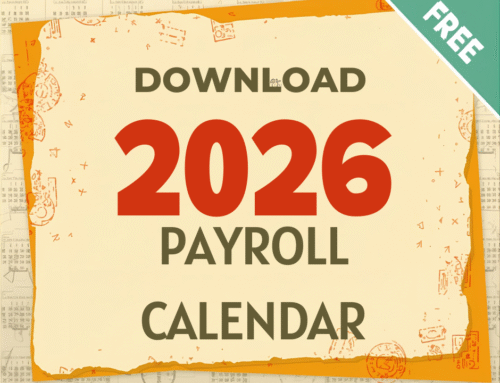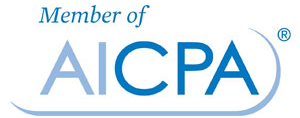
Charles Read, CPA, USTCP, IRSAC
President/CEO GetPayroll
Find me on LinkedIn
The IRS Form W-4 was changed effective 1/1/2020. This is the first real change of the Form W-4 in many years, and it is a major change. The reason for the change is the “Tax Cut and Jobs Act” (TCJA) of 2017. The law eliminated exemptions which were the basis for adjusting withholding down within an income bracket. The more exemptions claimed the less tax withheld. The new W-4 is an attempt to make an employee’s withholding approximately equal to their tax liability in a post exemption environment. As of January 1st, 2020, there is a new Form W-4 for new employees and those that want to change their withholding. There is no need for existing employees to fill out a new Form W-4. The one they have on file is fine.
The new Form W-4 has five steps in the form itself and two additional schedules.
Every new employee is required to submit a complete Form W-4 to their employer. If they don’t, or the form is invalid, the employer must withhold at the single rate with no adjustments. That use to be S and zero exemptions.
Many new employees will only need to fill out steps 1 and 5.
Step one is easy.
- Name and address
- Social security number
- filing status that you expect to file for your 2020 Form 1040 U.S. Individual Income Tax Return. There are three boxes available to check off.
If you are filing single or “married filing separately, you will check the first box. The other boxes are for “Married filing jointly” and “Head of household” and will withhold at a lower rate than checking the single box. If you file as married filing jointly or head of household and want more withheld without completing steps two three and four and giving that information to your employer, you can check the first box “Single or Married filing separately, and more withholding will be taken out of your income.
Step 2 is to try and adjust your withholding for multiple jobs.
There are three options in Step 2.
Option a: is the most accurate and in many ways the easiest. You would open up the companion to the new Form W-4, which is the “Tax Withholding Estimator” at www.irs.gov/W4app . This is a program that is designed to take into account most of the common things that change an individual’s withholding.
- Your filing status
- Dependents
- Other Income from other jobs
- Retirement Income
- Self-employment Income
- Social Security Income
- If you are over 65 or Blind
- Other sources of income and amount
- Unemployment Compensation
- Itemized Deductions
- And More
Option b: use the “Multiple Jobs Worksheet” included with the form along with tables on page four of the Form W-4, or
Option c: Check the box for two jobs that have equal pay.
Obviously Option a: is the most comprehensive and accurate.
Step 3
Step 3 is designed to lower your withholding based on the number of dependents you will be claiming on your tax return. It has lines for children under 17, which is one deduction rate and other dependents which is a different deduction rate.
Step 4
Step 4 is for other adjustments. There are only two general categories to fit everything in a complex tax situation into:
a: which you will be adding to your income and therefore your withholding, and
b: for deductions which will reduce your income and thereby reduce the amount of withholding. There is a worksheet for deductions attached to the Form for your personal use.
There is a c line where you can add an additional tax to be withheld each pay period. If your tax advisor has gone through all the calculations this is where you can adjust your withholding up if you have been told you should do so.
There is no line to reduce your withholding if you think that is appropriate.
Step 5
Step 5 is where you sign and swear under penalties of perjury that everything on the Form W-4 is correct and complete.
The employee only needs to submit page one to the employer. Everything else is for the employee’s use and is not required to be given to the employer. Nor if you use the “Withholding Tax Estimator” do you need to give that information to the employer.
Most payroll providers will accept a written statement and provide withholding based on a percentage or a specific amount. If your tax advisor has calculated a specific percentage or amount to withhold, you should notify your employer of that fact. Most employers will horror that request. Remember the whole idea of the W-4 is to make your withholding equal your tax liability and eliminate problems when it is time to file your Form 1040 Personal Income Tax Return.
You can adjust the numbers on the Form W-4 to produce a refund if you wish. Some individuals use this to create a forced savings account to provide a sum for a large purchase to be made with their tax refund. We don’t recommend this as it is giving an interest-free loan to the government when you could be investing that money and making additional income for it. But it is an individual choice.
You can also adjust the numbers so that you owe money when you file your Form 1040. That is also not recommended. If you fail to be able to pay those taxes at the filing of your return, there can be penalties and interest, which can be very expensive. If you do that repeatedly, the IRS can go to your employer and arbitrarily change your withholding to suit the IRS and there is basically no recourse on your part. This is called a lock-in-letter.
Employers need to be aware that there are now two sets of withholding based on whether the employee has a 2019 or earlier W-4 on file of a 2020 or later W-4 on file. Publication 15-T, available online at the IRS, has been expanded to include all the requisite tables for calculating employee withholding.
Interested in learning more about GetPayroll services?
Are you shopping for new payroll services? Schedule a demo to see if GetPayroll is right for your business.
If you are a current GetPayroll customer (yay!), take a look at some of our new services that may help streamline your business operations.
Comments and Suggestions
Don’t forget to leave us a comment below and tell us what you think. If you have any requests or suggestions, we’d love those too!










